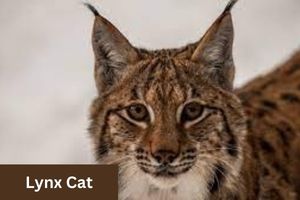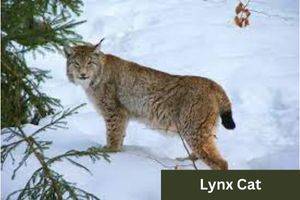Lynx Cat
Lynx cats are absolutely lovely animals that wander the arctic regions of North America, Europe, and Asia. They are distinguished by their tufted ears and stealthy manner. These mysterious felids, which are members of the species Lynx, are recognized for their elusiveness, adept hunting techniques, and remarkable morphological characteristics.
We’ll delve into the world of lynx cats in this article, learning about their habitat, behavior, unusual adaptations, and the critical part they play in preserving the ecological harmony of their native environments.
- Sheepadoodles Dog Breed, Pros & More (2023)
- Longest living Dog breeds {2023}
- Dogs That Start With J {2023}
Pictures of Lynx Cat
View images of the wild lynx cat. The word “leuk-” means “light, brightness” in Indo-European, and refers to the medium-sized wild cat. There are four species of it: the Bobcat, Canada, Iberian, and Eurasian lynx.

Habitat & Distribution
Lynx cats are mainly found in boreal and woodland areas of the Northern Hemisphere, where they have developed adaptations that allow them to survive in chilly, icy surroundings. Their range includes Asia, Europe, and North America, and they are frequently found in coniferous and mixed forests.
The Eurasian Lynx (Lynx lynx), the Canadian Lynx (Lynx canadensis), the Iberian Lynx (Lynx pardinus), and the Bobcat (Lynx rufus) are the four main species of lynx, each of which is adapted to a particular geographic region.
Eurasian Lynx:
The boreal woodlands of Europe and Asia are home to the Eurasian Lynx. With males ranging up to 88 pounds and females averaging around 44 pounds, they are the largest species of lynx.
Canadian Lynx:
These lynx cats are native to North America and are mainly found in the north of the continent, particularly in Canada and Alaska. They can survive in cold climes well.
Iberian Lynx:
The Iberian lynx, which only exists in a small portion of Spain and Portugal, is the most endangered of all lynx species. They mostly live in scrubland and woods in the Mediterranean.
Bobcat:
From southern Canada to Mexico, bobcats can be found throughout North America. With males weighing about 30 pounds and females about 20, they are the smallest of the lynx species.
Behavior and Reproduction
Understanding the behavior and reproductive habits of lynx cats provides valuable insights into their fascinating lives.
Lifestyle of Solitude:
Lynx cats are solitary animals that only associate with one another during the breeding season. To prevent competing for prey inside their lands, they maintain solitary lives.
Breeding Season:
The breeding season for lynx cats is clearly defined and typically takes place in the late winter or early spring. Males and females use vocalizations and scent marks to discover potential mates during this time.
Birth:
After a gestation period of around two months, female lynx give birth to a litter of kittens. One to four kittens make up the average litter. Until the young lynx are old enough to hunt on their own, the mother is responsible for caring for and protecting them.
Lifespan:
Lynx cats in the wild often live for 10 to 15 years. However, a number of causes, such as habitat degradation and human activity, frequently pose a threat to their survival.
Lynx cats are absolutely lovely animals that wander the arctic regions of North America, Europe, and Asia.
Conclusion:-
Lynx cats are genuinely remarkable predators of the northern wilderness, playing a critical part in preserving ecological balance thanks to their outstanding physical characteristics, well-honed adaptations, and diverse diet. These elusive animals, which include the Eurasian lynx and the bobcat, are proof of nature’s miracles.
The survival of these unique felids and the preservation of the ecosystems they inhabit depend on our ability to comprehend and protect their environments. Let’s work to preserve lynx cats and the complicated web of life they are an essential part of as we continue to discover and appreciate the beauty of nature.


